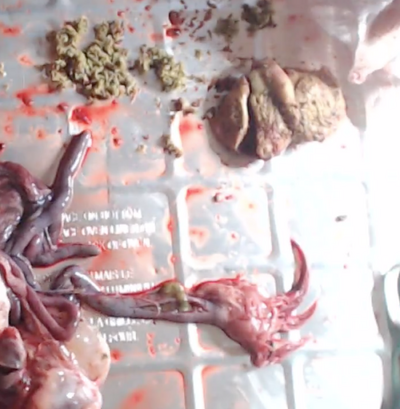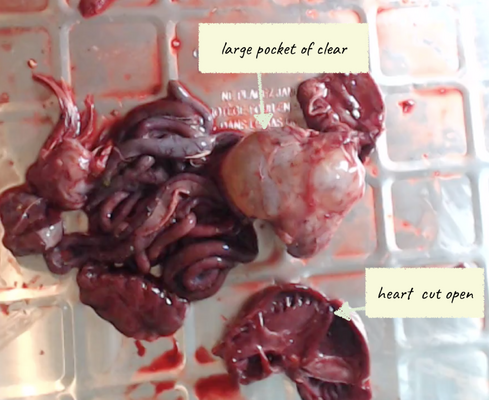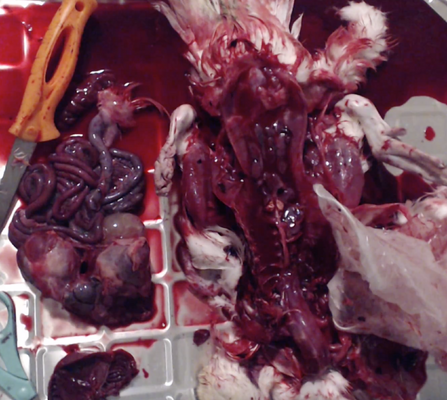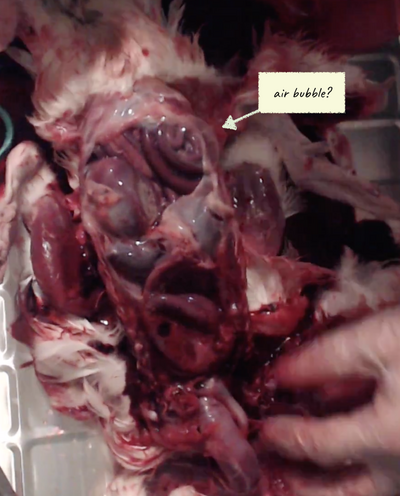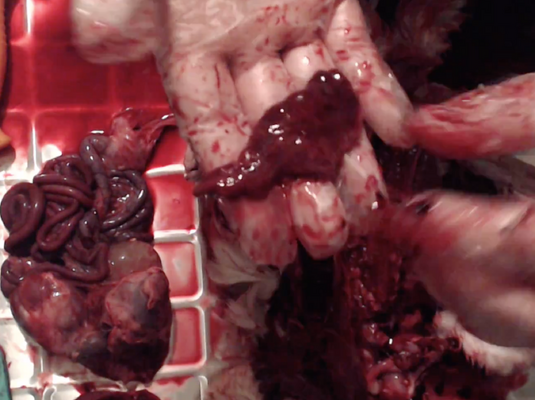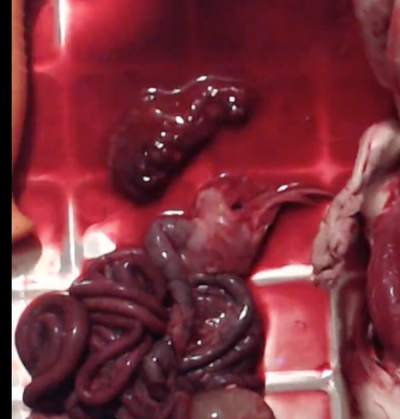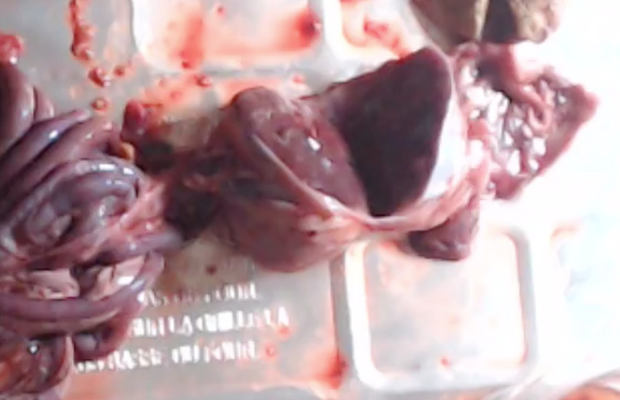PrettyCoolChicks
Songster
The youngest of my 3 muscovy ducklings (Loulou) died this morning out of the blue. It was exactly 8 weeks old, a day younger than the others - but it looked like it was about 4 weeks behind the other two in terms of size and feathering.
I found Loulou at 11am inside the coop, flat on the belly between two milk jugs I use as duck waterers. One of the waterers was tipped over on the side but its content was mostly still inside. The chicken were all still perching and the other two ducks were on the chicken side of the coop, drinking at the chicken's heated waterer.
Loulou had no signs of injury, no pasty butt, no sign of respiratory issues prior to this... maybe the beak seemed slightly blue-ish when I found it, which is why my initial thought was Loulou died of exposure. This week was down to -5C at night, and I was worried Loulou might get chilled without all adult feathers. But Loulou did have a heat plate and would normally go under it to warm up during the day and sleep there at night. The coop is insulated so it stays quite cozy when there's 7 chicken + 3 ducklings inside a night, even with an open window for airflow. So what happened?
I did a home necropsy because of the slow growth/development; but I only ever dissected a mouse in highschool and am unsure if what I saw was normal or not. I included my notes and some pics below if anyone can look at them and tell me if you see something abnormal, that would be appreciated!
I feel especially bad because I went at 11am because I thought the coop would stay warmer longer if I didn't open the door right at 8am like most days. That's too bad because I expect at 8am, Loulou would have still been alive and maybe I could have done something to help, based of when rigor started.
In terms of setup, there was still a divider with a duckie door which was open that night (so ducks can get away from chicken if needed, they sleep on the "safe" side), but integration was complete and both groups mostly stayed out of each other's way. They're fed duck starter with nutritional yeast and have access to the run during the day (mostly lawn, some bushes and a kiddie pool, occasional treats for chicken like grains, apples or some vegetable greens). The coop has deep litter, topped off or at least turned (almost) every day, so fairly clean and dry.
I found Loulou at 11am inside the coop, flat on the belly between two milk jugs I use as duck waterers. One of the waterers was tipped over on the side but its content was mostly still inside. The chicken were all still perching and the other two ducks were on the chicken side of the coop, drinking at the chicken's heated waterer.
Loulou had no signs of injury, no pasty butt, no sign of respiratory issues prior to this... maybe the beak seemed slightly blue-ish when I found it, which is why my initial thought was Loulou died of exposure. This week was down to -5C at night, and I was worried Loulou might get chilled without all adult feathers. But Loulou did have a heat plate and would normally go under it to warm up during the day and sleep there at night. The coop is insulated so it stays quite cozy when there's 7 chicken + 3 ducklings inside a night, even with an open window for airflow. So what happened?
I did a home necropsy because of the slow growth/development; but I only ever dissected a mouse in highschool and am unsure if what I saw was normal or not. I included my notes and some pics below if anyone can look at them and tell me if you see something abnormal, that would be appreciated!
I feel especially bad because I went at 11am because I thought the coop would stay warmer longer if I didn't open the door right at 8am like most days. That's too bad because I expect at 8am, Loulou would have still been alive and maybe I could have done something to help, based of when rigor started.
- Heart looked collapsed/hollow/caved in, very thin walled - like a deflated baloon, I expected it to be plump and more muscle-y - not sure if that expectation is correct, the only other duck heart I ever saw was years ago and cooked.
- In necropsy guides, liver always looks pancake-like (flat-ish and long/pointy-shaped), Loulou's liver shape looked more like american football ball, not sure if that is normal for ducks.
- There was a bubble/pocket of clear liquid underneath the liver, about as big as the liver, liquid had very mild smell, slightly vinegary maybe? Hard to describe, barely noticeable, not unpleasant. No idea what is up with that.
- There was an air bubble between the skin and intestines? Maybe just a result of how I cut things open?
- Crop was full, contained some small pieces of grit, smelled like fresh feed. Intestine coming out of the crop contained feed-colored liquid and smelled the same. Large intestine contained green-ish, liquid-ish poop. Probably all normal?
- Air pipes looked clear of obstructions as far as I could tell. Couldn't really see lungs or air sacs in the bloody mess.
- There are dark round blobs against the back side, underneath all the intestines. Are those supposed to be there?
- I was surprised by how much blood/liquid there was everywhere right from the first cut into the ribcage, there's barely any in all the tutorials/guides/photos I've looked at before trying myself. I was not prepared for that.
- I was probably lucky but everything mostly smelled of fresh duck meat and quite appetising...
- Still no idea about gender even after the necropsy, for learning purposes is there a way to tell?
- If anyone wants to see, I filmed the entire procedure because I couldn't take photos with bloody hands, feel free to pm if you'd like to see those.
In terms of setup, there was still a divider with a duckie door which was open that night (so ducks can get away from chicken if needed, they sleep on the "safe" side), but integration was complete and both groups mostly stayed out of each other's way. They're fed duck starter with nutritional yeast and have access to the run during the day (mostly lawn, some bushes and a kiddie pool, occasional treats for chicken like grains, apples or some vegetable greens). The coop has deep litter, topped off or at least turned (almost) every day, so fairly clean and dry.

